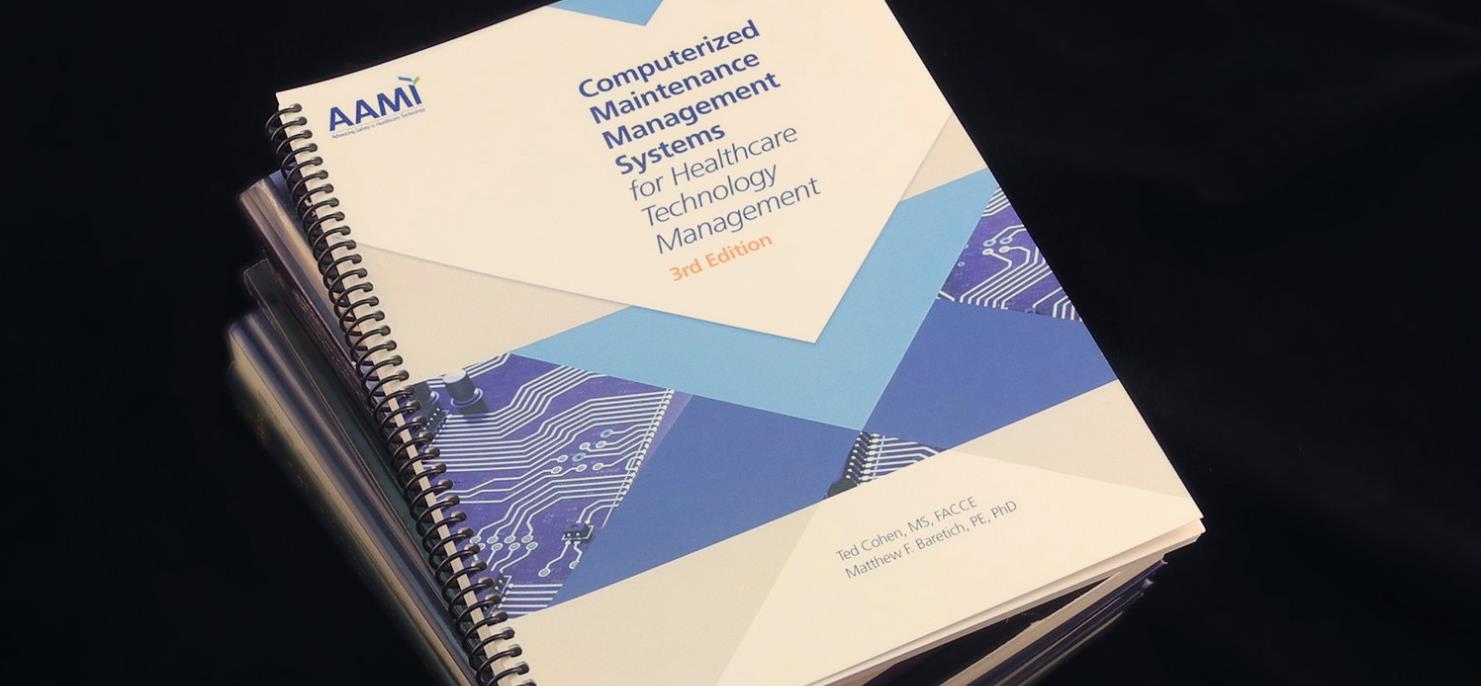
A new edition of Computerized Maintenance Management Systems for Healthcare Technology Management was recently published by the Association for the Advancement of Medical Instrumentation (AAMI). Ted Cohen was the lead author on the previous two editions. He and I decided that a lot had happened since the previous edition (2013) so we wrote a new one, much of it from scratch.
Part 1 describes the basic features of a CMMS, an essential tool for managing medical technology in hospitals and other healthcare facilities. Essentially every HTM-focused CMMS product has the same set of core functions:
- Medical equipment inventory and maintenance history.
- Scheduling of PM (Planned Maintenance) for medical equipment.
- Management of repair parts, external vendor services, and service contracts.
- Generation of management reports, documentation of standards compliance, and so on.
In Part 2 we write about critical issues for managing CMMS software and for turning CMMS data into actionable information. The CMMS management chapters include material on maintaining CMMS data integrity, making use of advanced reporting capabilities, and coordinating responsibilities of the HTM and IT (Information Technology) departments. There are also chapters on configuring the CMMS and using CMMS data in the following areas:
- Regulatory Compliance
- Financial Management
- Personnel Management
- Performance Monitoring
- Medical Equipment Planning
- Service Contract Management
Part 3 focuses on CMMS project implementation. Because nearly all HTM departments have functioning CMMS software already in place, these projects are typically about replacing existing software. Sometimes, the perceived need for a replacement CMMS is dissatisfaction with the functionality of the existing software or the quality of vendor support. Perhaps more often, replacement is driven by a need for scalability (to accommodate growth in a hospital system, for example) or standardization (so that all hospitals in a system use the same CMMS software).
Another commonly-encountered reason for CMMS replacement is the growing need for integration with other computer systems in a healthcare organization. Examples include integration with financial and supply-chain software, RTLS (Real Time Location System) software, ITSM (Information Technology Service Management) software, and so on. It’s true that most CMMS products provides the core functionality described in Part 1 of the book, but they vary widely in how effectively they can be integrated with other data systems.
Chapters in Part 3 include:
- CMMS Project Planning
- CMMS Software Evaluation and Selection
- CMMS Software Configuration, Testing, and Management
In Part 4 we write about the future of CMMS software including, for example, the rapidly-approaching capability — now under development by the PCD (Patient Care Device) group within the IHE (Integrating the Healthcare Enterprise) effort — to connect medical devices not only to the hospital systems EMR (Electronic Medical Record) but also to CMMS software. It won’t be long until the POST (Power-On Self-Test) capabilities of many medical devices evolve to record the results in the CMMS and, when a problem is identified, summon the HTM department. We are already experiencing rapid evolution in HTM-oriented CMMS products, and there’s much more to come.
